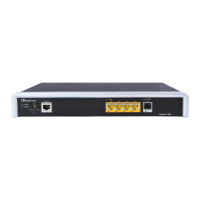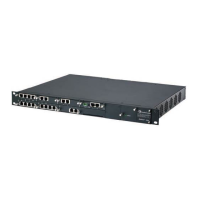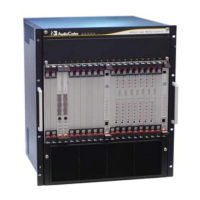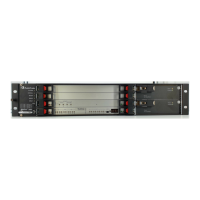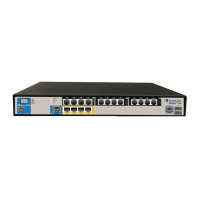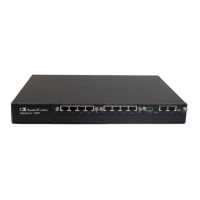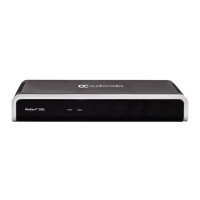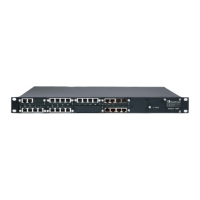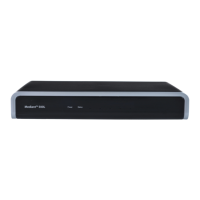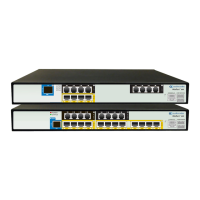User's Manual 314 Document #: LTRT-68822
Mediant 2000
Parameter Description
This parameter is applicable only to the IP-to-IP routing application.
To denote all IP Groups, leave this field empty.
If this IP Group has a Serving IP Group, then all calls from this IP Group
are sent to the Serving IP Group. In such a scenario, this routing table is
used only if the parameter PreferRouteTable is set to 1.
Web: Src. Host
Prefix
EMS: Source Host
Prefix
[PREFIX_SrcHostPr
efix]
Defines the prefix of the SIP Request-URI host name in the From header of
the incoming SIP INVITE message.
Notes:
To denote any prefix, use the asterisk (*) symbol.
This parameter is applicable only to the IP-to-IP routing application.
Web: Dest. Host
Prefix
EMS: Destination
Host Prefix
[PREFIX_DestHostP
refix]
Defines the SIP Request-URI host name prefix of the incoming SIP INVITE
message.
Notes:
To denote any prefix, use the asterisk (*) symbol.
This parameter is applicable only for IP-to-IP routing application.
Web: Src. Trunk
Group ID
EMS: Source Trunk
Group ID
[PREFIX_SrcTrunk
GroupID]
Defines the Trunk Group from where the call is received.
Notes:
To denote any Trunk Group, use the asterisk (*) symbol.
This parameter is applicable only to the Gateway application.
Web: Dest. Phone
Prefix
EMS: Destination
Phone Prefix
[PREFIX_Destinatio
nPrefix]
Defines the prefix and/or suffix of the called (destination) telephone number.
The suffix is enclosed in parenthesis after the suffix value. You can use
special notations for denoting the prefix. For example, [100-
199](100,101,105) denotes a number that starts with 100 to 199 and ends
with 100, 101 or 105. To denote any prefix, use the asterisk (*) symbol or to
denote calls without a called number, use the $ sign. For a description of
available notations, see 'Dialing Plan Notation for Routing and Manipulation
Tables' on page 501.
The number can include up to 50 digits.
Notes:
For LDAP-based routing, enter the LDAP query keyword as the prefix
number to denote the IP domain:
"PRIVATE" = Private number
"OCS" = Lync / OCS client number
"PBX" = PBX / IP PBX number
"MOBILE" = Mobile number
"LDAP_ERR" = LDAP query failure
For more information, see Routing Based on LDAP Active Directory
Queries on page 183.
If you want to configure re-routing of ISDN Tel-to-IP calls to fax
destinations, you need to enter the value string "FAX" (case-sensitive) as
the destination phone prefix. For more information regarding this feature,
see the FaxReroutingMode parameter.
Web/EMS: Source
Phone Prefix
[PREFIX_SourcePr
efix]
Defines the prefix and/or suffix of the calling (source) telephone number.
You can use special notations for denoting the prefix. For example, [100-
199](100,101,105) denotes a number that starts with 100 to 199 and ends
with 100, 101 or 105. To denote any prefix, use the asterisk (*) symbol or to
denote calls without a calling number, use the $ sign. For a description of
available notations, see 'Dialing Plan Notation for Routing and Manipulation
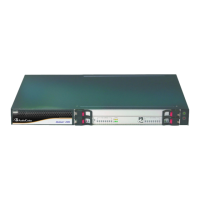
